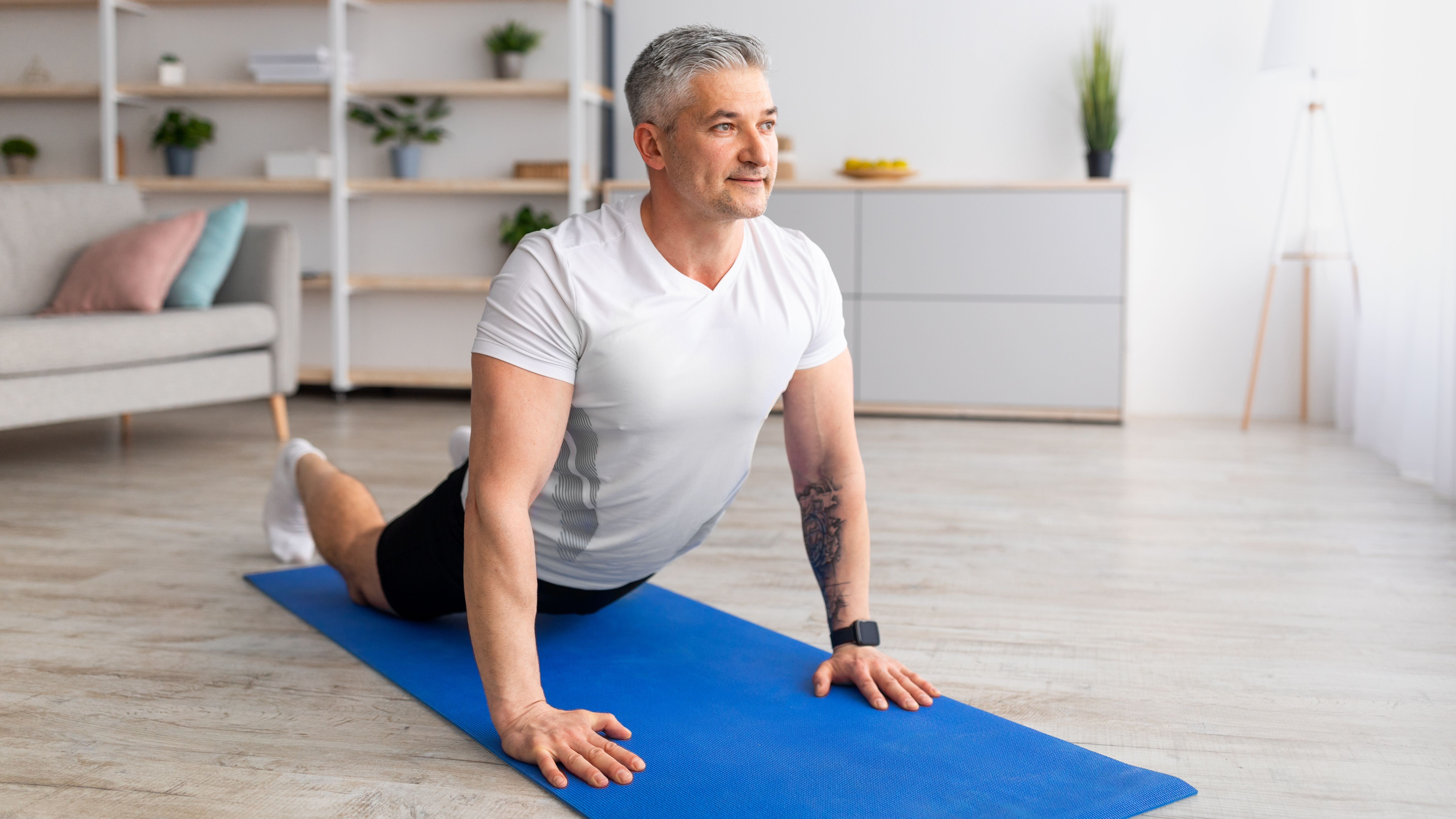A physical therapist shares the four moves he does to keep his spine feeling youthful
The moves are tailored to people who spend too much time sitting

Back pain is common if you work a desk job, but that doesn't mean you should ignore it.
"Many people spend most of their day in limited positions, like sitting, which can cause stiffness over time," says physical therapist Sanjit Kooner.
You can alleviate some of these aches and pains by incorporating more movement into your day.
A good place to start is this four-move stretching routine from Kooner that's designed to keep your spine feeling youthful.
He uses this routine himself to counteract inactive days, as it "encourages the spine to move in all the ways it’s meant to."
How to do Sanjit Kooner's spinal health stretching routine
A post shared by Physio San (@physio_san_)
A photo posted by on
You don't need any equipment for this routine and it shouldn't take longer than 10 minutes.
Kooner says that he usually performs six to 10 repetitions of each exercise.
Start your week with achievable workout ideas, health tips and wellbeing advice in your inbox.
"I’ll do this three to five times per week, often as part of my warm-up or after staying in a stationary position for too long," he says.
"The back routine is designed to keep the spine mobile and resilient by moving it through all its primary ranges of motion—extension, flexion, side bending, and rotation."
According to Kooner, regular stretching helps maintain joint range of motion, reduces muscular tension, improves circulation, and keeps connective tissues pliable.
Here are the benefits of each move demonstrated above.
What are the benefits of each move
Cobra and wiggle
"This move opens the front of the body, restores lumbar extension, and promotes gentle movement between vertebrae," Kooner says.
Lumbar extension is the backward bending motion of the lower back—the exact opposite position to sitting.
Kneeling thoracic extension and side flexion
"This targets the mid-back’s ability to extend and laterally bend," says Kooner.
Practicing lateral (side) bends with your mid-back means that you’ll be able to move more freely, rather than relying on your neck and lower back to execute this kind of movement.
Spinal wave
"This improves segmental control and coordination along the spine," Kooner says.
This should make your back feel more fluid and less stiff.
World's greatest stretch
This move is rightly popular with all trainers and has a name that reflects its effectiveness.
"It combines hip, hamstring, and thoracic spine mobility, which is key for full-body movement patterns," Kooner explains.
Alice Porter is a freelance journalist covering lifestyle topics including health, fitness and wellness. She is particularly interested in women's health, strength training and fitness trends and writes for publications including Stylist Magazine, Refinery29, The Independent and Glamour Magazine. Like many other people, Alice's personal interest in combining HIIT training with strength work quickly turned into a CrossFit obsession and she trains at a box in south London. When she's not throwing weights around or attempting handstand push-ups, you can probably find her on long walks in nature, buried in a book or hopping on a flight to just about anywhere it will take her.
You must confirm your public display name before commenting
Please logout and then login again, you will then be prompted to enter your display name.